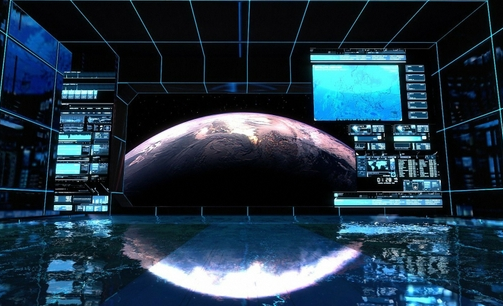As a child, it was shows like “Lost in Space,” Star Trek, “Space 1999” and “UFO” that sparked my interest in sci-fi and technology. Today, the old sci-fi movies from the 50s and 60s are loaded on my tablet for hours of entertainment. Yes, the special effects, costumes and even some of the acting are lacking.
 The recent craze around the Back to the Future II movie and my last blog on how spot on sci-fi of the 80s has been in predicting today’s technology led me to take a closer look at the old sci-fi TV shows and movies.
The recent craze around the Back to the Future II movie and my last blog on how spot on sci-fi of the 80s has been in predicting today’s technology led me to take a closer look at the old sci-fi TV shows and movies.
Even early science fiction predicted the technology we see today. Take Siri. Do you remember how uncomfortable she made people just a few years ago and all the crazy questions iPhone users asked her? She is not new. Almost every sci-fi show, if not all, has a talking computer. Or take VoIP (Voice over Internet Protocol), which is commonly used as phone service today. This is what the many space captains used to call the shuttle.
What’s interesting is the key technologies that sci-fi almost always gets wrong:
- Wireless
In sci-fi, everything has cords. They pull their “mobile phones” or even “walkie talkies” from their hips, but they are tethered in some fashion. Early sci-fi rarely shows the complete transfer of information between two points without an electrical conductor. That may be surprising considering the first wireless telephone conversation occurred in 1880 when Alexander Graham Bell and Charles Summer Tainter invented and patented the photophone. This device conducted audio conversations wirelessly over modulated light beams. Sounds like sci-fi, doesn’t it. - Miniaturization
Watch old sci-fi and even the 1989 movie Back to the Future II and you’ll find that most of the futuristic technology is larger than life. Sci-fi missed the miniaturization of technology. They never imagined that we could hold so much computing power in the palm of our hand. Sure, you do see some wearable technology, but they still fall short of the computing capabilities that we’re accustomed to today. Or take nanotechnology, the manipulation of atoms, molecules and supramolecules. It gave way to the first scanning tunneling microscope in 1981, which earned the inventors a Nobel Prize. Nanotechnology seems like a sci-fi fit, but the countless space shows didn’t even whisper the idea. The term first surfaced in the mid-70s but was not widely known until the early 2000s. - The Internet
The Internet is at the center of our technology today and even our modern day existence. But sci-fi missed the concept all together. Maybe that’s why the wireless concept never caught on in sci-fi either. The Internet of Everything (IoE) is designed to bring together people, processes, data and things to make the networked connections more relevant and valuable. Now that’s a concept that early space captains could have really used – and taken to a new level. - Connectivity
We expect connectivity today and are moving toward a world where everything we touch will be connected. I shared an idea of what this will look like in my last blog on Predicting Future Technology. Sci-fi is filled with cool gadgets and technology to solve problems. It even captures technology getting “too smart.” That “intelligence” usually led the devices to try to take over the world, rather than share data to ignite a chain reaction that leads to a better collective outcome. Imagine what the sci-fi captains could have done with that.
Technology is advancing faster than we expected, but I hope sci-fi still takes us farther. At any age, sci-fi can ignite our imaginations and challenge us to think about all the possibilities that technology can provide in the future. I hope it inspires others just like it did me. We’ve got a lot more problem solving to do.